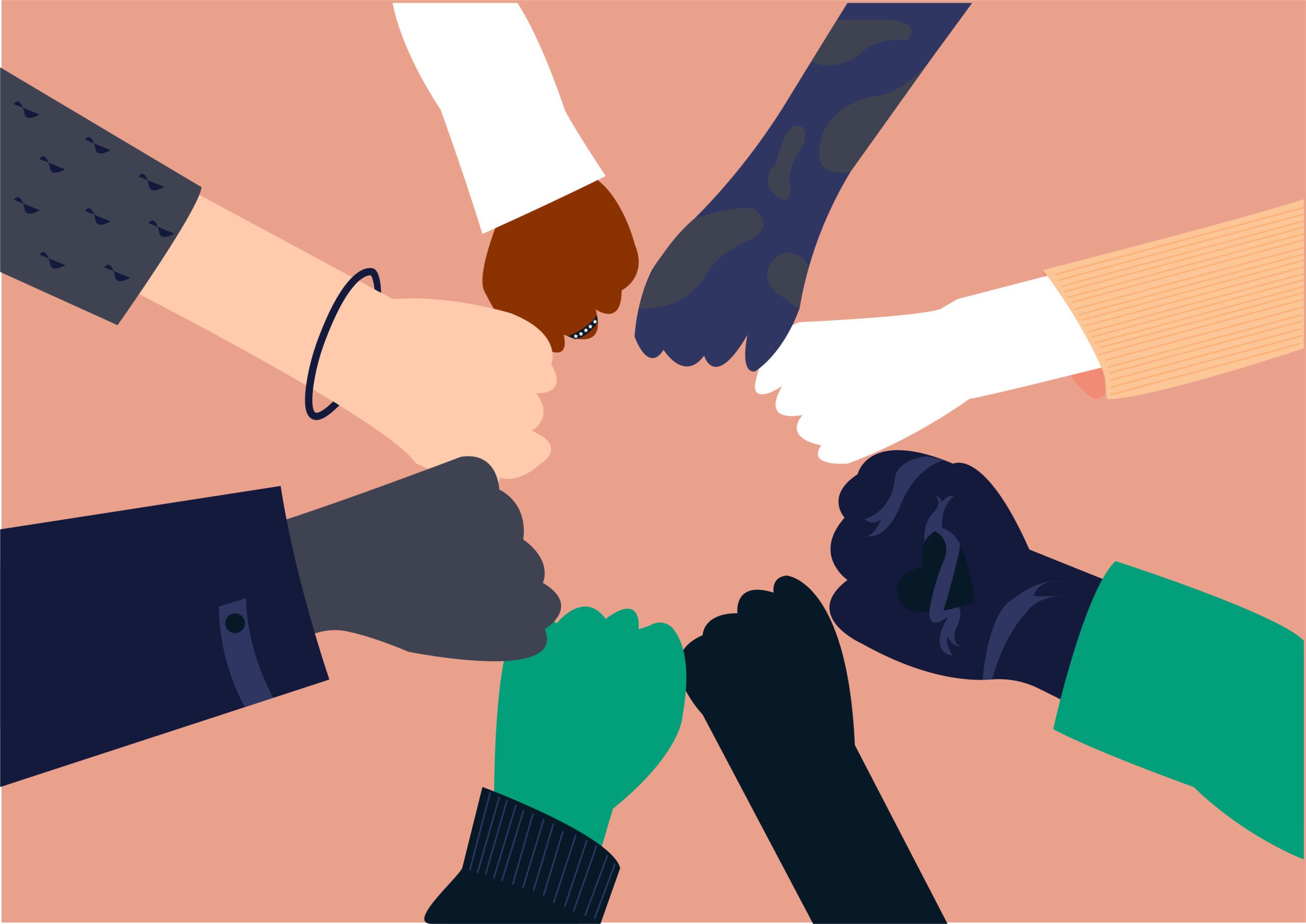“I don’t want to say the wrong thing.”
In every facilitation, workshop or class I’ve taught about diversity, equity, inclusion and belonging, at least one participant has raised their real or virtual hand to express this concern. Usually, several colleagues join in with gestures of solidarity.

Language by its very nature evolves over time, but it also carries its own history and trauma. One word can unlock centuries of unaddressed harm or spur an immediate and urgent sense of disagreement. Neither is particularly desirable, especially not in the workplace, where one mistake can create a ripple effect of hurt and discord.
However, saying nothing isn’t a good option. On a day-to-day level, when too much goes unsaid or is avoided, work simply can’t be done as productively or even at all. Fear of saying the wrong thing can also reinforce systems of oppression and create cover for discriminatory, microaggressive and harassing behaviors. In fact, “cultures of silence” can provide protection for ongoing instances of sexual harassment, racial and disability-related discrimination and hostility towards groups categorized as “the other” (i.e., the #MeToo movement’s relationship to cultures of silence in filmmaking).
So, we need to talk about issues of identity at work, but when we do, there is a risk we might not say the right thing. What to do?
Since language is always changing, it’s better to set guidelines on how to decide what to say rather than resort to rote memorization. Guidelines that are broadly applicable, human-centered and easy to remember offer the most potential upside for compassionate and informed conversation.
1. Self-identification
The best way to avoid saying the wrong thing is to avoid assumptions and give people the opportunity to name themselves. “How do you identify?” can be an appropriate conversation if your organization has made social identity part of your meeting agreements, especially if the ability to “opt-out” is always explicitly stated.
Stating your own identities may also serve as invitation for others to do the same. For example, when I start a meeting with someone new, I will name my identities. “Hi, my name is Alida Miranda-Wolff. I identify as a White-passing Latiné cisgender woman with an invisible disability. I’m a new parent. I’m also the founder and CEO of Ethos.” With that, others will follow my lead, naming the identities they feel comfortable disclosing.
Responding to self-identification with grace and care is as important, if not more so, than creating the space for it to take place. In a facilitated forum with a midsize nonprofit organization my DEIB firm works with, a participant interjected during introductions to say, “Why are you saying Latiné when everyone prefers Latinx?” To be clear, this person did not identify as either. They also did not grasp that if I had just identified as Latiné, then “everyone” was an overstatement. In that moment, my mistake was sending several articles about how and why the term Latinx has fallen out of favor, or perhaps, was never in favor in the first place. I should have focused instead on the principle – once I have named my identity, respect my self-identification, don’t question my word choice.
2. Person-first language
Person-first language, also known as people-first language (PFL), is an inclusive language concept focused on denoting a condition, disability or diagnosis a person has instead of defining them exclusively in terms of it. For example, the difference between “person who uses a wheelchair” versus “wheelchair-bound person” is not just the order of the words, but what that order signals. In the first example, the person uses a tool; in the second, the tool defines their personhood.
While many in the disability justice movement self-identify as people with disabilities, others may call themselves disabled people. As a person with a disability myself, I prefer the person-first option since my disability is part of a broader constellation of attributes that make me who I am. My preference is not always shared, which is why the first principle of self-identification is so important.
Nevertheless, defaulting to person-first language can help minimize the potential for offending or mischaracterizing your colleagues.
3. Idioms
Idioms are figurative phrases that often don’t make sense when used outside of a certain context. You might say “it’s raining cats and dogs” and be understood; the same does not apply to something like, “I’m eating cats and dogs.” The mechanics of the idiom mean that in the first example, the listener doesn’t think cats and dogs are falling from the sky, but that it’s raining a lot, while in the second example, it’s more likely you’ll be understood as literally eating cats and dogs as opposed to eating a lot of food.
Idioms can lend character and variety to communication. They can also make understanding what’s being said harder for folks who didn’t grow up with those idioms; and, since many date back to a different time, don’t reflect changing social and cultural norms.
Take the term “grandfather in,” which means that old rules may still apply after new ones have been put in place, is a direct reference to the “grandfather clause,” a Reconstruction-era policy that disenfranchised many Black voters. When considering using idioms, first reflect on what a simpler, clearer, and mutually intelligible phrase might be. Then, try to use that phrase.
4. Appropriated language
Like idioms, appropriated words often come with complex histories that signal disrespect to various groups. In many technology and professional services organizations, the term “sherpa” is informally used to signify “guide.” The term guide, however, is both more accessible and inclusive. Specifically, there at 18 Sherpa clans, native to Nepal, and the term refers to their rich culture and ethnicity. It’s not a vocation.
Much like sherpa, words like “guru,” “ninja,” and “tribe” are used in casual conversation to respectively mean teacher, skilled, and community. In each case, the appropriated language has special significance within another culture or religious identity, whereas the simple, universal words do not. Using “teacher” instead of “guru” makes for plainer speech and respects cultural and religious tradition, rather than debasing it for the purpose of verbal shorthand.
5. Positive over negative
Define a person by who they are, not by who they aren’t. Terms like “non-White” or “non-Christian” diminish a person’s identity while also foregrounding whatever the dominant identity is. To say “non-White,” for example, is like saying, “there are White people, and then there is everybody else.”
Lean into self-identification as a strategy and then stick to it. When you don’t know someone’s identity, rather than assume – assuming what somewhat isn’t is a common kind of workplace assumption – use neutral language.












